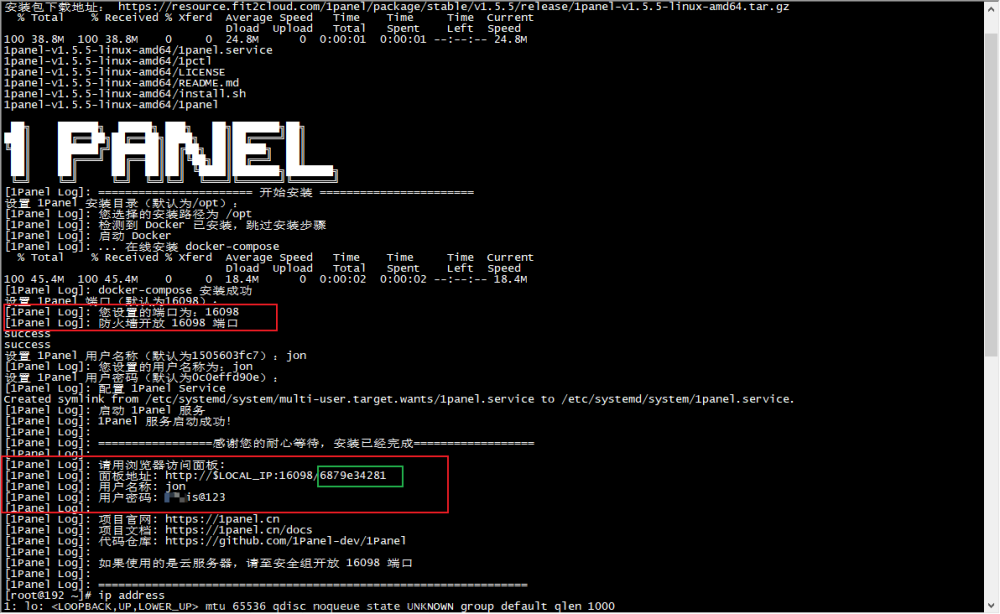目录
1.1.用途
1.2.基本语法
1.2.1.格式:
1.2.2.例
1.3 文件测试
1.4.整数测试
1.4.1.作用
1.4.2.操作符
1.4.3.示例:
1.5.逻辑操作符
1.5.1.符号
1.5.2.例:
1.6.命令分隔符
1.1.用途
为了能够正确处理Shell程序运行过程中遇到的各种情况,Linux Shell提供了一组测试运算符.
通过这些运算符,shell程序能够判断某种或者几个条件是否成立。
条件测试在各种流程控制语句,例如判断语句和循环语句中发挥了重要的作用,所以了解和掌握这些条件测试是非常重要的
1.2.基本语法
1.2.1.格式:
格式1: test -参数 条件表达式
格式2: [ 条件表达式 ] # 注意: [ ] 的左右要有空格
格式3: [[ 条件表达式 ]] # 注意: [ ] 的左右要有空格,格式1.2的增强版本,支持通配符 # 只有[[ ]]可以支持并且启用双重正则
格式4: ((条件表达式))注意:
test单独使用,判断条件为真,echo s?返回0,假返回1
test与[ ]等价
[[ ]] 是扩展命令,可以使用通配符等进行模式匹配,&& >等操作符可以直接应用于双中括号中,但不能用于单中括号中
(())一般用于if语句里,两端不需要有空格,测试对象为整数在[ ]中参数:-a并且,-o或者
1.2.2.例
格式一:
test -参数 条件表达式
测试passwd是否为普通文件
[root@server ~]# test -f /etc/passwd # -f 是否为普通文件
[root@server ~]# echo $? # 以上俩条命令要配合使用# 返回值0成立,返回值1不成立。
# test配合自编逻辑表示
[root@server ~]# test -f /etc/hosts && echo 1 || echo 0
1
[root@server ~]# test -f /etc/a1.txt && echo 1 || echo 0
0
# 解析:并且(&&):左侧成立则右侧执行,
或者(||):左侧成立则右侧不执行
扩展:
[root@server ~]# test -f /etc/hosts && echo "文件为普通文件" || echo "文件不为普通文件"
文件为普通文件
[root@server ~]# test -f /etc/a1.txt && echo "文件为普通文件" || echo "文件不为普通文件"
文件不为普通文件
格式二:
[ 条件表达式 ] # 注意: [ ] 的左右要有空格 # test与[ ]等价
[root@server ~]# [ -f /etc/hosts ] && echo 1 || echo 0
1
[root@server ~]# [ -f /etc/a1.txt ] && echo 1 || echo 0
0
[root@server ~]# [ -f /etc/hosts ] && echo "文件为普通文件" || echo "文件不为普通文件"
文件为普通文件
[root@server ~]# [ -f /etc/a1.txt ] && echo "文件为普通文件" || echo "文件不为普通文件"
文件不为普通文件
[root@server ~]# [ 3 > 2 && 1 < 2 ] && echo yes ||echo no
-bash: [: 缺少 `]' # 不支持通配符等进行模式匹配
no
格式三:
[[ 条件表达式 ]] # 注意: [ ] 的左右要有空格,格式1.2的增强版本,支持通配符
[root@server ~]# [[ 3>2 || 1>2 ]]
-bash: 条件命令中有未预期的符号 284
-bash: “3>”附近有语法错误 # 报错原因<, > 俩侧需要加空格&&(并且):
[root@server ~]# [[ 3 > 2 && 1 > 2 ]] && echo yes ||echo no
no
[root@server ~]# [[ 3 < 2 && 1 > 2 ]] && echo yes || echo no
no
[root@server ~]# [[ 3 < 2 && 1 > 2 ]] && echo yes || echo no
no
[root@server ~]# [[ 3 < 2 && 1 < 2 ]] && echo yes || echo no
no
[root@server ~]# [[ 3 > 2 && 1 < 2 ]] && echo yes ||echo no
yes # 结论:左右都成立才返回真||(或者):
[root@server ~]# [[ 3 > 2 || 1 > 2 ]] && echo yes ||echo no
yes[root@server ~]# [[ 3 > 2 || 1 > 2 ]] && echo yes || echo no
yes
[root@server ~]# [[ 3 < 2 || 1 < 2 ]] && echo yes || echo no
yes
[root@server ~]# [[ 3 < 2 || 1 > 2 ]] && echo yes || echo no
no # 结论:只要左右有一方成立则返回为真[root@server ~]# [[ -f /etc/passwd ]] && echo 1 || echo 0
1
格式四:
((条件表达式)) # 一般只支持整数的操作
[root@server ~]# ((3>5)) && echo 1 || echo 0
0
[root@server ~]# ((3<5)) && echo 1 || echo 0
1不可执行:
[root@server ~]# ((3.1<5)) && echo 1 || echo 0
-bash: ((: 3.1<5:语法错误: 无效的算术运算符 (错误符号是 ".1<5")
0[root@server ~]# ((-f /etc/passwd)) && echo 1 || echo 0
-bash: ((: -f /etc/passwd:除以 0 (错误符号是 "etc/passwd")
0
1.3 文件测试
可使用以下命令的参数:test ,[ ] [[ ]]
参数 作用 -b 文件名 检测文件是否是块设备文件,是返回 true -c 文件名 是否是字符设备文件 -d 文件名 是否是目录 -f 文件名 是否是普通文件 (不是目录,也不是设备文件) -S 文件名 是否为socket文件 -P 文件名 是否为管道符文件 -L 文件名 是否为链接文件 -u 文件名 是否有suid的权限 -s 文件名 是否为空(文件大小是否大于0) ,不为空返回 true -e 文件名 检测文件 (包括目录)是否存在,如果是,则返回 true -r 文件名 检测文件是否可读,如果是,则返回 true。 -w 文件名 检测文件是否可写,如果是,则返回 true -X 文件名 检测文件是否可执行,如果是,则返回 true -n 参数 检测数字是否为整数 f1 -nt f2 文件f1比文件f2新则为真 (根据文件修改时间计算) f1 -ot f2 文件f1比文件f2旧则为真 (根据文件修改时间计算)
例:
[root@server ~]# [ -e /etc/passwd ] && echo yes || echo no
yes
[root@server ~]# [ -f /etc/passwd ] && echo yes || echo no
yes
[root@server ~]# [ -d /etc/passwd ] && echo yes || echo no
no
[root@server ~]# [ -d /etc ] && echo yes || echo no
yes
[root@server ~]# [ -s /etc/passwd ] && echo yes || echo no
yes
[root@server ~]# [ -x /bin/over ] && echo yes || echo no
yes
# d开头的均为块文件。c 为字符串文件, l开头为链接文件
则有:
[root@server ~]# [ -c /dev/sr0 ] && echo yes || echo no
no
[root@server ~]# [ -b /dev/sr0 ] && echo yes || echo no
yes[root@server ~]# [ -L /dev/cdrom ] && echo yes || echo no
yes # 光盘的快捷方式
[root@server ~]# touch /etc/a.txt
[root@server ~]# [ -s /etc/a.txt ] && echo yes || echo no
no
[root@server ~]# echo "hello world" > /etc/a.txt
[root@server ~]# [ -s /etc/a.txt ] && echo yes || echo no
yes读,写,执行:
[root@server ~]# ll /etc/a.txt
-rw-r--r--. 1 root root 12 12月 10 16:30 /etc/a.txt
[root@server ~]# [ -r /etc/a.txt ] && echo yes || echo no
yes
[root@server ~]# [ -w /etc/a.txt ] && echo yes || echo no
yes
[root@server ~]# [ -x /etc/a.txt ] && echo yes || echo no
nof1 -nt f2:比较的主要是最近改动时间
例题:编写脚本,测试根目录文件是否存在,文件名从键盘输入,若不存在则创建
方法一:使用read命令来获取变量名
[root@server ~]# vim test1.sh
#!/bin/bash read -p "请输入文件名称:" filename if test -e /$filename then echo "$filename exists and it is a normal file" else echo "$filename doesn't exit!!" echo "create file $filename" touch /$filename fi执行查看/下是否存在mnt,并且查看nmt是否存在,若不存在则创建
方法二:使用位置变量来获取变量名
[root@server ~]# vim test1.sh
#!/bin/bash filename=$1 if test -e /$filename then echo "$filename exists and it is a normal file" else echo "$filename doesn't exit!!" echo "create file $filename" touch /$filename fi执行查看/下是否存在mnt,并且查看mnnt是否存在,若不存在则创建
注意:使用find检索文件,无论成功与否状态码均为一
1.4.整数测试
1.4.1.作用
用于比较两个数值的大小关系,操作的对象是数值
1.4.2.操作符
整数二元比较操作符使用参考
#知识扩展
在[ ]以及 test 中使用的比较符号 在(())和[[ ]] 中使用的比较符号 说明 -eq ==或= 相等,全拼为 equal -ne != 不相等,全拼为 not equal -gt > 大于,全拼为 greater than -ge >= 大于等于,全拼为 greater equal -lt < 小于,全拼为 less than -le <= 小于等于,全拼为 less equal
#=~ : 检查左侧内容是否匹配右侧的正则表达式
1.4.3.示例:
[root@server ~]# [ 6 -gt 3 ] && echo yes || echo no
yes
[root@server ~]# [ 6 -lt 3 ] && echo yes || echo no
no
[root@server ~]# test 6 -lt 3 && echo yes || echo no
no
[root@server ~]# test 6 -gt 3 && echo yes || echo no
yes
[root@server ~]# [[ 6 < 3 ]] && echo yes || echo no
no
[root@server ~]# [[ 6 > 3 ]] && echo yes || echo no
yes
[root@server ~]# ((6>3)) && echo yes || echo no
yes
[root@server ~]# ((6<3)) && echo yes || echo no
no
[root@server ~]# ((6 < 3)) && echo yes || echo no
no
#=~ : 检查左侧内容是否匹配右侧的正则表达式
[root@server ~]# n1=123
[root@server ~]# [[ $n1 =~ ^[0-9]+$ ]] && echo yes || echo no
yes # 匹配n1内的内容是否全为数字[root@server ~]# n1=123abd
[root@server ~]# [[ $n1 =~ ^[0-9]+$ ]] && echo yes || echo no
no
[root@server ~]# n1="china"
[root@server ~]# [[ $n1 =~ ^[0-9]+$ ]] && echo yes || echo no
no
例题一:编写表达式,测试系统用户以50个为界限输出相关信息。(多余或少于)
[root@server ~]# [[ $(cat /etc/passwd |wc -l) > 50 ]] && echo "用户大于50" || echo "用户小于50"
用户小于50
例题二:判断当前的已登录的账户数,超过5个则输出提示信息
方法一:
[root@server ~]# who |cut -d " " -f1 | sort -u | wc -l # 过滤登陆用户个数
1# who:查看账户信息
# cut -d " " -f1: 以空格作为列间隔符,截取第1列
# sort -u : 去重后排序
[root@server ~]# [ $(who |cut -d " " -f1 | sort -u | wc -l) -lt 5 ] && echo "登陆用户数小于5" || echo "登陆用户数大于5"
登陆用户数小于5方法二:
[root@server ~]# num=$(who |cut -d " " -f1 | sort -u | wc -l)
[root@server ~]# [ $num -lt 5 ] && echo "登陆用户数小于5" || echo "登陆用户数大于5"
登陆用户数小于5
例三:如果/var/log/messages 文件行数大于50行,则显示提示信息
方法一:
[root@server ~]# mnu=$(cat /var/log/messages | wc -l)
[root@server ~]# echo $mnu
102
[root@server ~]# [ $mnu -gt 50 ] && echo "文件行数大于50" || echo "文件行数小于50"
文件行数大于50方法二:
[root@server ~]# [ $(cat /var/log/messages | wc -l) -lt 50 ] && echo "文件行数小于50" || echo "文件行数大于50"
文件行数大于50
[root@server ~]# [ $(cat /var/log/messages | wc -l) -gt 50 ] && echo "文件行数大于50" || echo "文件行数小于50"
文件行数大于50[root@server ~]# (( $(cat /var/log/messages | wc -l) > 50 )) && echo "文件行数大于50" || echo "文件行数小于50"
文件行数大于50
注意:[root@server ~]# [[ $(cat /var/log/messages | wc -l) > 50 ]] && echo "文件行数大于50" || echo "文件行数小于50"
文件行数小于50# 答案错误,原因:双方括号
[[ ]],它是 Bash shell 特有的条件判断符号。在这个命令中,$(cat /var/log/messages | wc -l)的计算方式与第一个命令相同。然而,条件判断符号>在双方括号中被解释为字符串的比较而不是数字的比较,因此结果是错误的。
例三:编写一个脚本mkfs.sh,功能: 显示root账户下的文件信息,之后建立一个aa目录,在aa目录中新建一个文件bb.txt,并修改为可执行的权限
[root@server ~]# vim mkfs.sh
# Author: xx # Email: xx@163.com # Organization: http://www.xx.com/xx/ # Created Time : 2023-12-10 18:40:07 # Description: ############################################################## ls /root mkdir /root/aa touch /root/aa/bb.sh chmod a+x /root/aa/bb.txt[root@server ~]# bash mkfs.sh
例四: 编写脚本mkd.sh,从键盘输入一个目录名,判断是否存在,不存在则创建
方法一:
[root@server ~]# vim mkd.sh
# 任务:编写脚本mkd.sh,从键盘输入一个目录名,判断是否存在,不存在则创建 read -p "请输入一个目录名称:" dir [ -d /$dir ] && ls -l $dir && echo "目录$dir存在" || echo "$dir目录不存在,创建目录$dir" && mkdir /$dir ls /测试:查看根目录下是否有haha目录
方法二:
#!/bin/bash # 任务:编写脚本mkd.sh,从键盘输入一个目录名,判断是否存在,不存在则创建 read -p "请输入一个目录名称:" dir [ -d /$dir ] && ls -l $dir && echo "目录$dir存在" || (echo "$dir目录不存在,创建目录$dir" ; mkdir /$dir;ls -l /)注意: ";" 链接括号中多个子语句,从左到右一次执行
测试:查看根目录下是否有haha目录
例5: 编写脚本sum1.sh,从键盘读入俩个整数存储到x,y中,计算其和值后输出
方法一:(缺点:每输入一次(无论对错)就要执行一次.sh文件)
read -p "输入整数x:" x read -p "输入整数y:" y [[ $x =~ ^[0-9]+$ ]] && [[ $y =~ ^[0-9]+$ ]] && echo "输出整数x+y的结果;$[x+y]" || echo ">请输入数字"方法二:
read -p "输入整数x:" x read -p "输入整数y:" y if [ -n $x -a -n $y ] # 判断是否为空 then if [[ $x =~ ^[0-9]+$ && $y =~ ^[0-9]+$ ]] # 判断是否为数字 then sum=$[x+y] echo "俩参数和为$sum" else echo "请输入数字" fi else echo "请输入有效数字" fi
例6: 编写脚本user1.sh,显示所有账户,选择一个账户输入,若id为0则表示管理员,否则表示其他账户
首先取出账户名:paswd文件的第列
[root@server ~]# cat /etc/passwd | cut -d ":" -f1
去重并排序:
[root@server ~]# cat /etc/passwd | cut -d ":" -f1 | sort -u
[root@server ~]# vim user2.sh
#!/bin/bash cat /etc/passwd |cut -d ":" -f1 | sort -u read -p "请输入账户名" name [ $(id -u $name) -eq 0 ] && echo "该账户为管理员" || echo "此账户为普通用户"
例7: 编写脚本line1.sh,统计/etc/sos/sos.conf文件中的空白行,若有空白行则显示行数,否则输出提示信息(空白行:行首行尾以及中间没有内容"^$"来表示空白行)
[root@server ~]# grep ^$ /etc/sos/sos.conf |wc -l
4 # 输出文件中的空白行 (使用正则表达式中的^:行首,$:行尾表示。)[root@server ~]# vim line1.sh
#!bin/bash num=$( grep ^$ /etc/sos/sos.conf |wc -l ) if [ $num -gt 0 ] then echo "/etc/sos/sos.conf有$num行" echo "行好为:" grep -n ^$ /etc/sos/sos.conf else echo “该文件没有空白行” fi
扩展:将以上服务业务扩展到任何可读文件
read -p "输入文件路径:" filename num=$( grep ^$ /$filename |wc -l ) if [ $num -gt 0 ] then echo "/$filename有$num行" echo "行号为:" grep -n ^$ /$filename else echo “该文件没有空白行” fi
1.5.逻辑操作符
1.5.1.符号
逻辑操作符
在[]和 test 中使用的操作符 在[[ ]] 和(())中使用的操作符 说明 -a && and,与,两端都为真,则结果为真 -o || or,或,两端有一个为真,则结果为真 ! ! not,非,两端相反,则结果为真
1.5.2.例:
root@server ~]# [ -f /etc/passwd -a -f /etc/services ] && echo 1 || echo 0
1
[root@server ~]# [ -f /etc/passwd -o -f /etc/services ] && echo 1 || echo 0
1[root@server ~]# [ -f /etc/passwd -a -d /etc/services ] && echo 1 || echo 0
0
[root@server ~]# [ -f /etc/passwd -o -d /etc/services ] && echo 1 || echo 0
1
1.6.命令分隔符
cmd1;cmd2 以独立的进程依次执行cmd1和cmd2
(cmd1;cmd2) 在同一进程中依次执行cmd1和cmd2
cmd1&cmd2 cmd1和cmd2同时执行,分属于不同的进程
cmd1&&cmd2 当cmd1为真时,则执行cmd2
cmd1llcmd2 当cmd1不为真时,则执行cmd2
cmd& 后台执行
例:
判断一个账户是否存在,若账户fox10不存在,则添加账户
[root@server ~]# id fox10 &> /dev/null && echo "fox10已存在" || useradd fox10
# 第一次执行命令无返回值,原因,系统判断无fox10因此添加账户ox10
[root@server ~]# id fox10 &> /dev/null && echo "fox10已存在" || useradd fox10
fox10已存在 # 由于上一次执行命令时以添加fox10因此显示已存在注意: &> /dev/null 表示将左侧命令执行的正确(或错误)输出到“黑洞”即不显示到屏幕文章来源:https://www.toymoban.com/news/detail-754627.html
 文章来源地址https://www.toymoban.com/news/detail-754627.html
文章来源地址https://www.toymoban.com/news/detail-754627.html
到了这里,关于shell条件测试的文章就介绍完了。如果您还想了解更多内容,请在右上角搜索TOY模板网以前的文章或继续浏览下面的相关文章,希望大家以后多多支持TOY模板网!













![[1Panel]开源,现代化,新一代的 Linux 服务器运维管理面板](https://imgs.yssmx.com/Uploads/2024/02/722869-1.png)







